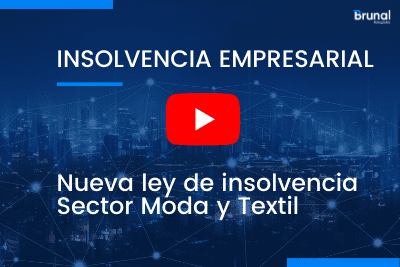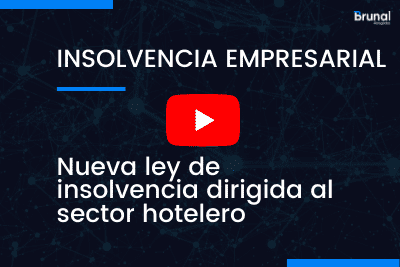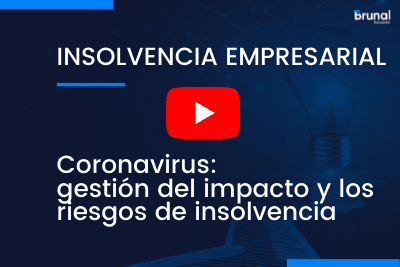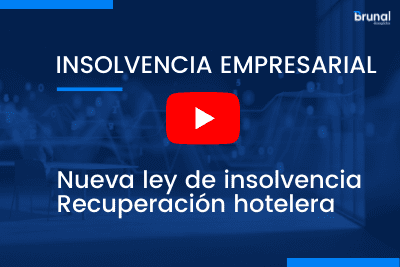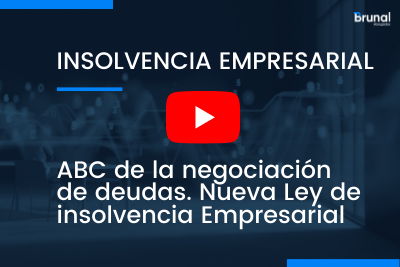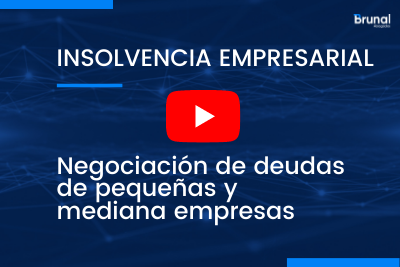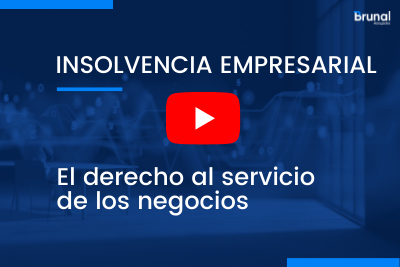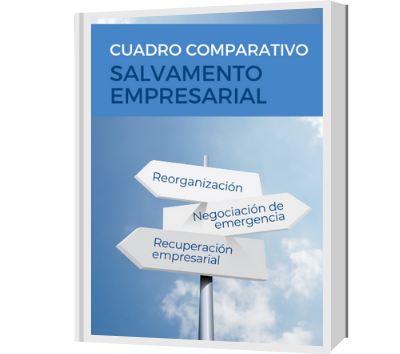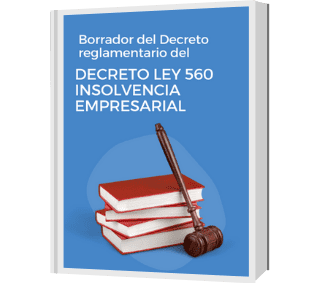Current Videos on Corporate Insolvency
Download our books
Surely you have heard about companies that have had some kind of economic problems and, consequently, have had to declare bankruptcy in order to receive the help and legal or financial benefits that the insolvency law offers and that allow the businessman to face his obligations. In such cases, it is likely that the company has availed itself of the Corporate Insolvency Law. If you are a non-trading natural person click here.
The corporate insolvency regime
From a legal point of view, corporate insolvency is a special regime that helps companies to recover when they experience a severe economic deficit, to such an extent that they can no longer meet all their financial commitments. This law is available to natural persons and legal entities, with the purpose of protecting their business from possible seizures or interest charges, for a specific period of time.
In Colombia, the corporate insolvency regime is regulated by Law 1116, enacted by the Congress of the Republic on December 27, 2006. The purpose of this Law, according to its Article 1, is “the protection of credit and the recovery and preservation of the company as a unit of economic exploitation and source of employment, through reorganization and judicial liquidation processes, always under the criterion of adding value”.
This law clearly establishes that the purpose of this instrument is the preservation and conservation of the company, and the scope of the corporate insolvency regime is to enable the company to reach payment agreements with all its creditors, as well as the orderly liquidation of its assets in the event of failure of the debt negotiation.
What is the judicial reorganization and liquidation process about?
However, a company or individual trader may seek protection under this legal regime by attempting a reorganization process, and failure or default of the reorganization agreement opens the way to the judicial liquidation process.
- Reorganization process: seeks to preserve viable companies and normalize their commercial and credit relations, using for this purpose the operational restructuring of the company, as well as its management, assets and liabilities.
- Judicial liquidation: this focuses – as its name indicates – on the rapid and orderly liquidation of the company’s assets, seeking to take advantage of the debtor’s patrimony.
According to article 9 of Law 1116 of 2006, in order to initiate this process, there must be a cessation of payments by the company or an imminent inability to pay.
Requirements to benefit from Law 1116 of 2006
In order to access the reorganization process, the company or individual merchant must comply with the guidelines described below:
Cessation of payments: According to the aforementioned article, the debtor will be in this situation when it is in default for more than ninety (90) days with two or more creditors, or when it has at least two execution lawsuits filed by them. Likewise, the value of these obligations must represent at least 10% of the total debt. For natural persons who are traders, food obligations will not be counted, nor the executive processes corresponding to them.
Imminent inability to pay: In this case, the debtor must justify “the existence of circumstances in the respective market or within its organization or structure, which affect or may reasonably affect in a serious manner, the normal fulfillment of its obligations, with a maturity equal to or less than one year”. This cause shall not apply to natural persons who are traders.
Judicial liquidation process
On the other hand, Article 47 stipulates that this process may be initiated only when there is a “”; or when some of the grounds set forth in Article 49 are met, such as: the debtor requests it directly or abandons its business, by request of the authority that oversees or controls the company, by joint petition of the debtor and a plural number of creditors holding not less than fifty percent (50%) of the external liabilities, among others.
Before whom is the process initiated?
Once the aforementioned legal requirements are met in order to qualify for the Colombian corporate insolvency regime, they must be submitted to the Superintendence of Corporations or to the civil judges of the corresponding circuit.
Other insolvency law considerations
In order to access the benefits of Law 1116 of 2006, it is not essential to be in a cessation of payments or in a scenario of bankruptcy of the company: by simply demonstrating an imminent risk of entering into such situation, it is possible to initiate any of the processes established in the corporate insolvency regime.
Likewise, it is important to add that according to Article 3 of the Law, some companies are excluded from the insolvency regime, such as health promotion entities, stock exchanges, agricultural and livestock companies, entities supervised by the Financial Superintendence of Colombia, entities supervised by the Superintendence of Solidarity Economy, public capital companies, public law entities, public utilities companies, non-trading natural persons, among others.
CORPORATE INSOLVENCY
Our allies
1. Certificate of existence and legal representation of the debtor company.
2. Certificate of existence and legal representation of the creditor company.
3. Proof of the existence of obligations more than 90 days past due and/or executive processes.
4. Proof of all obligations.
5. The five (5) basic financial statements corresponding to the last three (3) fiscal years and the respective opinions subscribed by a Public Accountant or Statutory Auditor.
6. An inventory statement of assets and liabilities.
7. Explanatory memorandum of the causes that led to the insolvency situation.
8. A cash flow to meet the payment of the obligations.
9. A business plan of reorganization of the debtor.
Jurisdiction and procedure
The Superintendence of Companies is responsible for the processing and decision of the reorganization process in accordance with Articles 9 and 14 of Law 1116 of 2006.
Its procedure will be provided for insolvency bankruptcy proceedings, under the reorganization modality, in accordance with the provisions of Law 1116 of 2006, partially amended by Law 1429 of 2010.
IMPORTANT
It will NOT apply to natural persons who do not carry out commercial activities, whose insolvency will be subject to the provisions of the “insolvency regime for non-commercial natural persons”, if you are not a trader Click here
Remuneration of the promoter
The fees of the promoter shall be set by the bankruptcy judge in the order opening the process according to the criteria indicated in Article 2.2.2.2.11.7.1 and following of the same Decree 2130 of 2015.
Regulations. New decrees effective for 2 years
- Decree 560 of 2020.
- Decree 772 of 2020
- Decree 842 of 2020
Regulations
- Decree 560 of 2020.
- Decree 772 of 2020
- Decree 842 of 2020
Regulations
- Decree 560 of 2020.
- Decree 772 of 2020
- Decree 842 of 2020
 (+57) 300 300 98 59
(+57) 300 300 98 59



